
MSRP: $27,500 - 35,580
8.2 /10
Rating
Pros
- Retractable hardtop styling
- Excellent fuel efficiency
- Sharp cornering agility
Cons
- Minimal cargo space
- No adaptive cruise
- Firm ride comfort
Mazda Miata RF Club Automatic review by Vyocar
Forget the numbers—this Miata speaks to the soul of driving enthusiasts who crave connection over spec sheets.
Overview
Getting into this two-seater takes you back to a simpler time, reminiscent of iconic sports cars like the MG TF and early Acura NSX, long before exotic cars like flashy Lamborghinis dominated enthusiasts’ dreams. It’s an honest machine that doesn’t rely heavily on flashy electronics, instead offering drivers an engaging, analog feel through its crisp 6-speed manual transmission. Behind the wheel, the engine delivers a smooth purr during relaxed cruising but transforms into an exhilarating roar under aggressive driving. The quick acceleration complements its lightweight bodywork, delivering a genuine go-kart feel around corners. Its sleek power top with distinctive fixed buttresses gives the RF edition a coupe-like look when the power-folding hardtop is closed. Unlike the sluggish front-wheel-drive experience of a hefty Caprice Classic LTZ, this rear wheels-driven dynamo balances power, handling, and fun flawlessly. Its small yet stylish form, praised by critics since its introduction in 1989, still wins the occasional informal zoomie award from enthusiasts. And while it’s a different kind of thrill than what you’d expect from a Mazda CX-5, the shared spirit of driver engagement and design excellence is unmistakable.
The Mazda Miata, a name that resonates with accessible fun and timeless design, doesn’t boast rocket-fast top speeds rivaling today’s cutting-edge supercars, but the practical affordability, everyday technology on the dashboard, and undeniable cuteness create a uniquely joyful thrill ride. Whether cruising casually, stretching its legs on a spirited mph stretch, or simply making a passenger chortle at its charmingly quirky roadster profile, this remains a genuine, pure, true sports car experience. You don’t have to relabel it with fancy badges or wrap it in British Racing Green with a tan interior to appreciate it; its distinct ND generation design, nimble driving dynamics, and honest lightness let it easily beat pricier rivals like the Fiat 124. Without sacrificing space or comfort significantly, this humble yet dynamically focused performer ensures every dollar feels well-spent—no overengineered nonsense, no “ethical politician” compromises, just authentic joy on wheels as rare today as an albino rhino drinking milk.
What’s New for 2020
For 2020, Mazda didn’t reinvent the wheel—they refined it with carefully chosen small updates that add just enough spice to keep loyal Miata buyers interested. This mid-cycle refresh of the popular ND generation includes practical upgrades like the inclusion of Android Auto and Apple CarPlay—finally addressing a major wish among tech-savvy drivers. Under the hood, the engine gets a welcome 26 horsepower boost, moving from a modest 155 to a more energetic 181 horsepower from the spirited inline-four. It doesn’t turn it into a rocket, but it injects a sense of urgency that’s immediately noticeable during daily drives and spirited back-road runs. Safety also gets a nod with standard driver-assistance features, part of Mazda’s improved i-Activsense suite, including blind-spot monitoring, rear cross-traffic alert, lane-departure warning, forward-collision warning, and automated emergency braking.
Styling tweaks are subtle yet effective, featuring an updated badging font, new interior and new exterior colors, plus the striking Soul Red Metallic paint option, which sparkles spectacularly—though prepare to shell out $595 extra for this premium color upgrade over the older Candy Apple Red option. The tested RF model, complete with its signature power retractable hardtop, sport suspension, and limited-slip rear differential, proves once again why it’s a top-of-the-line pick, easily justifying the modest bump in price since the 2019 model year. These thoughtful changes show why the brand remains the go-to popular choice among those who appreciate a lightweight, affordable signature sports car experience that never runs out of steam, even 100 years after Mazda first introduced itself—truly a centennial celebration worth noting.
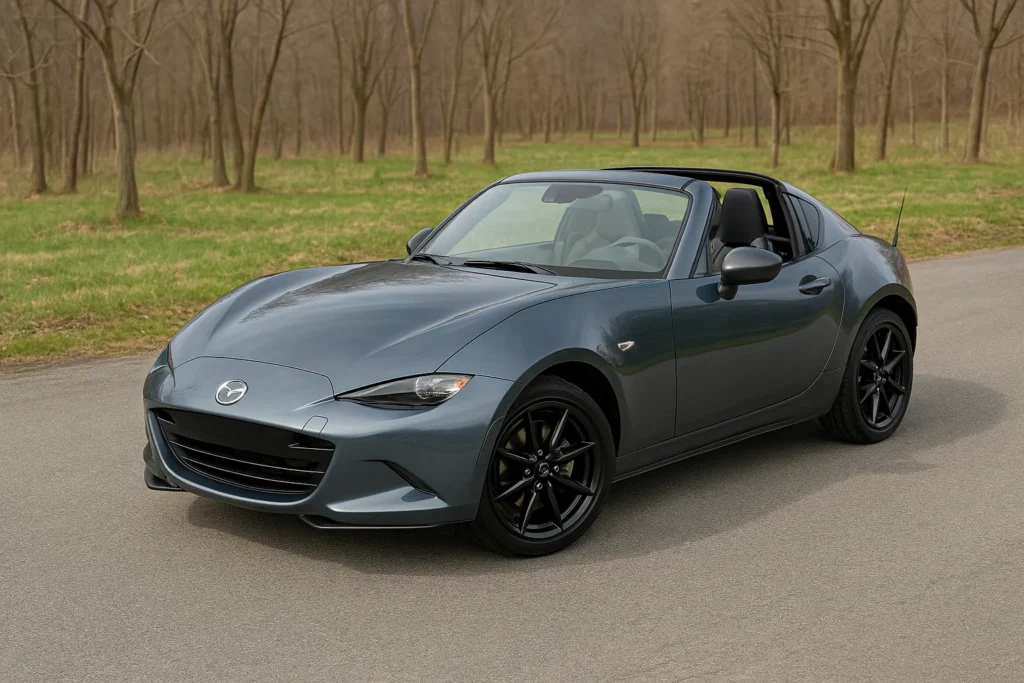
Pricing, Trim Levels, and Best Pick
Choosing between the available trims can be tricky, especially when each offers its own unique twist on fun. The RF Club hits the sweet spot with a price of around $35,185, roughly $3,000 less than the top-tier trim, the Grand Touring, but still comfortably outfitted with features like sporty cloth seats, a responsive 7” touchscreen infotainment system, and seamless Apple CarPlay and Android Auto integration. While you won’t find raw muscle here compared to rivals like the Ford Mustang GT, Chevy Camaro SS, or LT1 Camaro with their roaring V8 engines, this nimble four-cylinder delivers enough thrills and driving finesse to make tackling tight twisties a genuine pleasure.
Sure, it’s impractical compared to a more versatile BMW 2 Series coupe or even a Nissan 370z, but there’s unbeatable charm in its simplicity—like a small car built specifically for feeling the wind in your hair. Plus, thoughtful additions like blind spot monitors, rear cross traffic alert, lane departure warning, smart keyless entry, LED headlights, a sporty leather wrapped steering wheel, intuitive voice commands, command control, easy-to-use shifter, sport tuned suspension, and classic hand-operated parking brake make the RF a seriously good value for the money, especially compared to spending a similar amount on a less refined Toyota 86 or the soft top Miata.
Powertrain, Transmission, and Driving Dynamics
Behind the wheel, it’s clear this isn’t about sheer muscle—leave that to heavier rivals like the 370Z, Toyota GR86, or pricier options such as the GR Supra or Volkswagen Golf R. Instead, Mazda’s naturally aspirated SkyActiv-G I4 engine, now boosted from 155 to 181 horsepower with 151 foot-pounds of torque, provides stirring acceleration rather than brutal force, hitting 0-60 mph comfortably in about 5.7 seconds (a noticeable improvement from the original 2015 version). Enthusiasts in America will appreciate the six-speed manual with its satisfying three-pedal shuffle, buttery smooth short throws, and a nicely weighted clutch. While the optional 6-speed torque converter automatic with paddle shifters offers convenience, the manual’s crisp gearbox and intuitive stick shift deliver unmatched gear control. The sport suspension and Bilstein shocks help minimize body roll through tight curves, while the electric power steering provides telepathic precision with notably light steering at parking speeds, turning tighter corners and urban curbs into effortless maneuvers.
It’s perfectly balanced 50:50 weight distribution keeps the chassis poised around corners, letting you confidently aim for apexes, with ample forgiveness provided by subtle yet effective stability control. Sure, it rides firm, feeling slightly jiggly over bumps and potholes, but that’s a fair trade for its go-kart agility. Braking is equally impressive, thanks to robust Brembo disc brakes, and a responsive throttle that rewards precise accelerator-pedal inputs—ideal for smooth rev-matched downshifts. The engine’s lively engine growl reaches a satisfying crescendo around the 7,500-rpm redline, delivering spirited thrills at realistic, non-outrageous speeds on the freeway or city streets. Unlike heavier luxury sport sedans or plush luxury cruisers, this lightweight fun car remains easy to control, with minimal powertrain vibration, ensuring enjoyable, comfortable everyday driving without intrusive electronic nannies. Simply put, whether navigating tight city streets or carving through country roads, this remains one of the purest, most genuinely engaging drives available today.
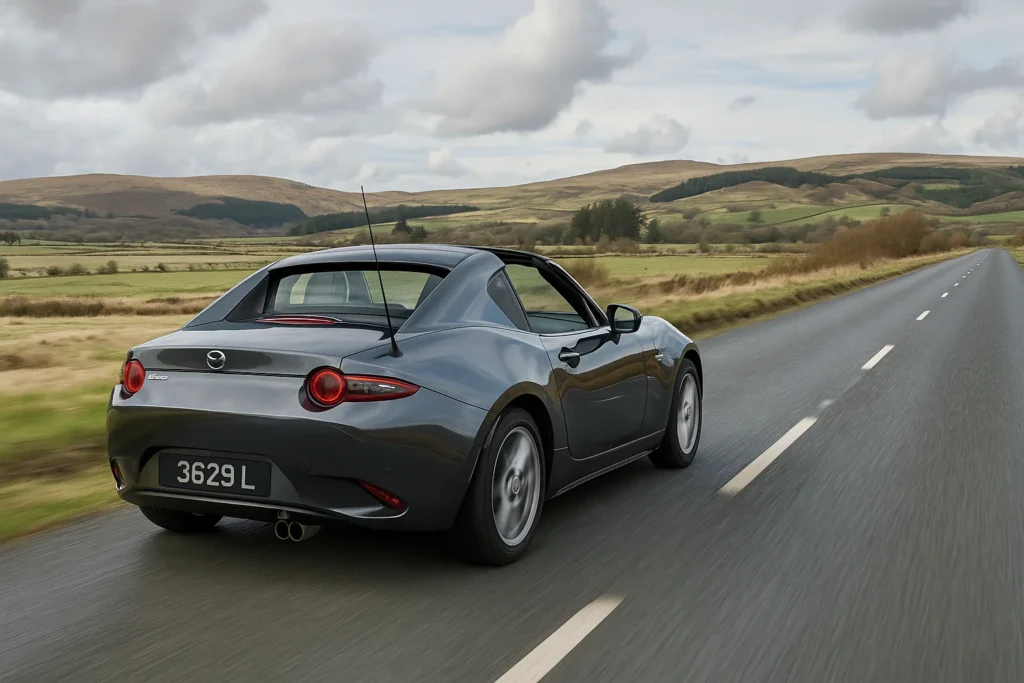
Fuel Efficiency and Real World Testing
During a week-long test loop through the Pacific Northwest—starting in Seattle, winding through Snoqualmie Pass, and returning via I-90—we put the 2020 Mazda RF Club to the real-world fuel economy test under a mix of dry highways, rainy backroads, and city congestion. With the six-speed manual humming along and a trunk full of camera gear (plus one overenthusiastic coffee spill), the RF Club returned a consistent 34.9 mpg over 278 miles of driving—just shy of the EPA-rated 26 mpg city, 34 highway, and 29 combined, but still impressive considering we weren’t babying the throttle. Highway stretches with cruise control set at 67 mph peaked at 36.4 mpg, while stop-and-go traffic near Tacoma dragged it down a bit. Notably, fuel economy dipped when navigating hilly terrain east of Cle Elum, where third gear got more action than expected. Still, for a car that begs to be driven spiritedly, the Miata’s efficiency doesn’t feel like a trade-off—it feels like a bonus for enthusiasts who want to enjoy every mile without wincing at the pump. Mazda3 drivers looking for similar balance in a more practical shape might also find inspiration here.
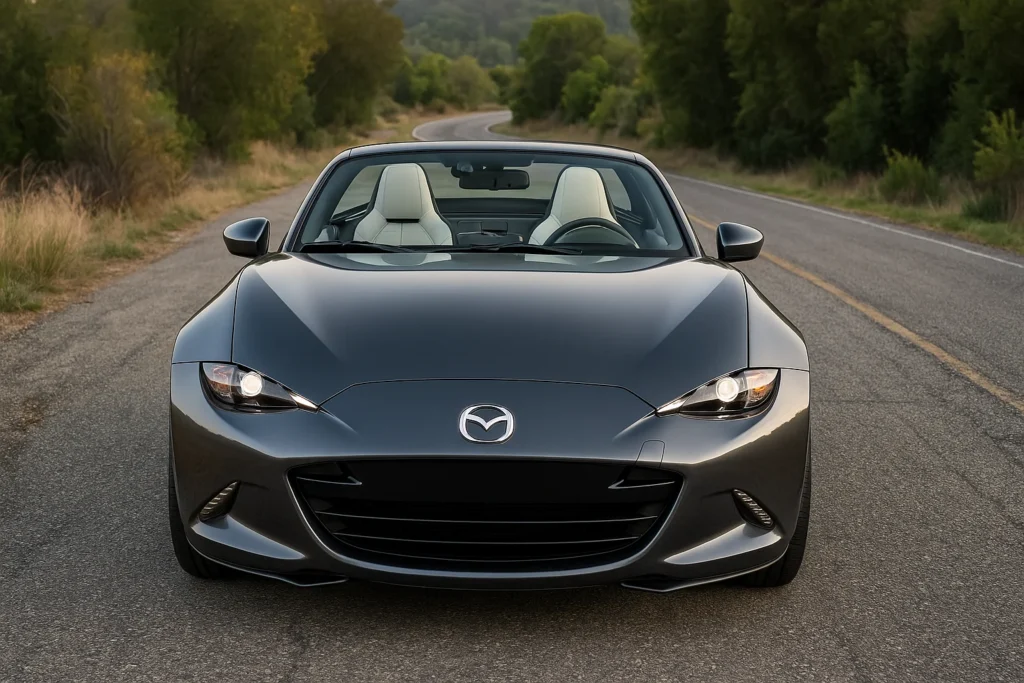
Interior and Comfort
Slipping inside feels like stepping into a snug yet functional cockpit, more tailored to sporty curves than family-hauling CX SUVs or a plush Volkswagen Arteon. While the interior dimensions aren’t designed for NBA players (my friend with his towering 6’4” frame found getting in and out amusingly challenging), the compact layout offers excellent ergonomics, with intuitive climate controls and a leather-wrapped wheel—though the non-telescoping steering wheel could be a minor annoyance for taller drivers. The black seats in my test model were surprisingly supportive, ideal for quick drives or extended trips on that elusive perfect road—think a scenic drive through a crisp Wisconsin fall. Practicality is minimal: instead of a traditional glovebox, you’ll find quirky storage like tiny cubbies, a small lockable box behind the seatbacks, and moveable cup holders awkwardly placed near your elbow. Still, touches like available heated seats, attractive classic sports car colors (especially the stunning black over tan leather combo), and body-matching door top trim deliver a vibe that’s sporty yet refined, feeling less like George Costanza fumbling with an oversized velvet handbag and more like a cozy, modern convertible with genuine character.
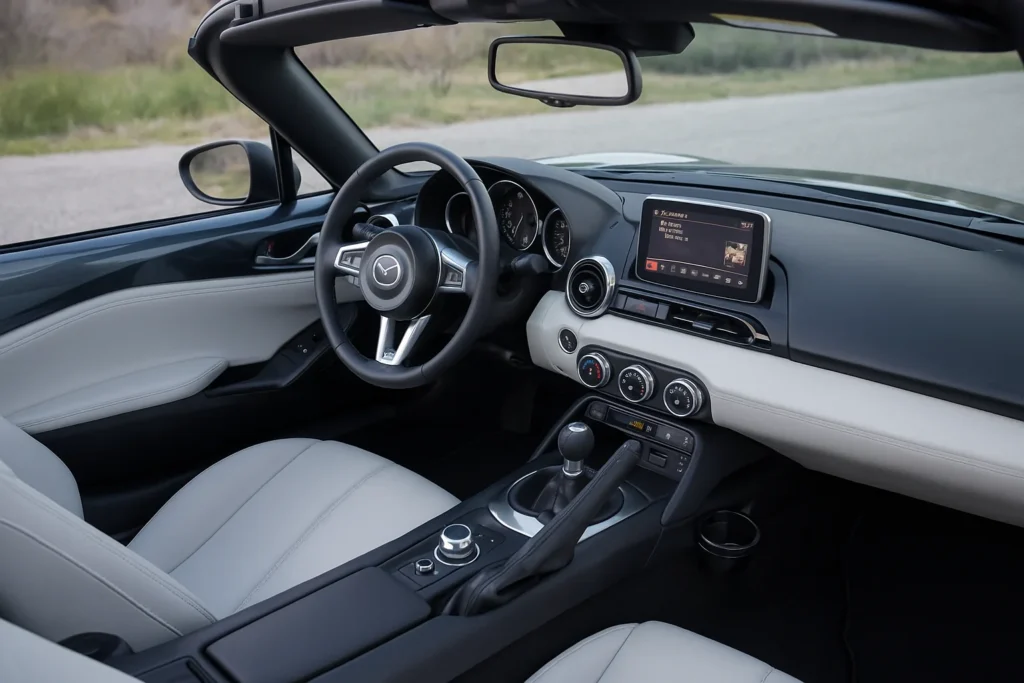
Cargo & Practicality
Let’s be honest—you’re not buying this two-seater for its trunk space or hauling your weekend groceries. The small trunk can just about fit a couple of overnight bags, and the interior storage situation is mostly limited to a few tiny cubbies scattered around, with no sign of a traditional glovebox. There’s a quirky removable cup holder awkwardly positioned between the seats, but taller folks (especially those 6-footers with long torsos) might feel cramped, struggling with minimal headroom and limited upper foot well space on the passenger’s side, causing a noticeable bulge near the left knee area. Forget about bringing along a large briefcase, as there’s barely enough room in the tight floor foot well or shallow bin behind the seatbacks—unless you’re accustomed to packing like you’re driving vintage Aston Martins. Still, the real storage space you need is probably at home, and it’s clear the engineers prioritized fun behind the wheel rather than practicality—perfect if your idea of packing light involves little more than sunglasses and a credit card.
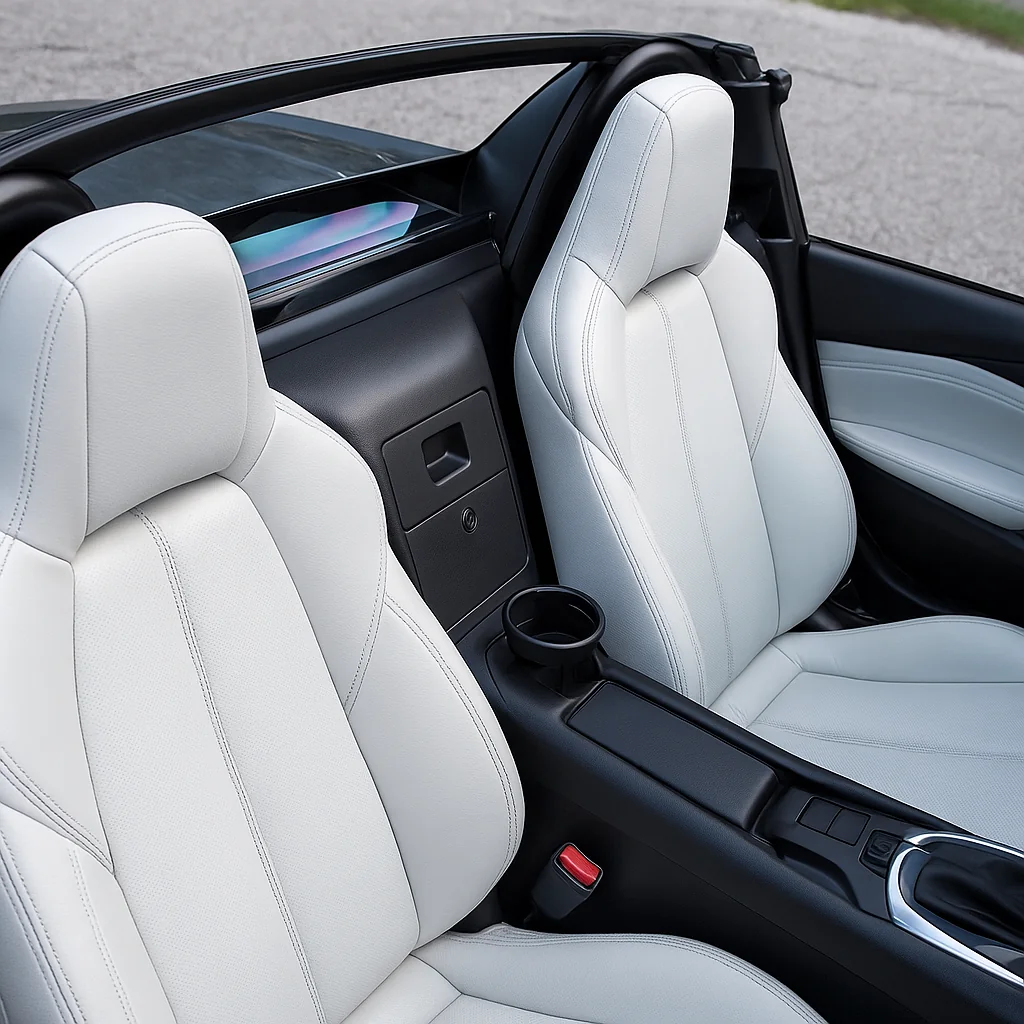
Tech & Connectivity
The first thing you notice about the infotainment setup is the 7-inch display—perfectly sized for a quick glance, but featuring somewhat unattractive graphics that feel a bit dated compared to sharper rivals like the Honda Civic Si. Thankfully, the system includes both Apple CarPlay and Android Auto, making it easy to plug in your phone via conveniently placed USB ports and bypass Mazda’s somewhat awkward, rotary-knob controller on the center console. The standard Mazda Connect multimedia system, while functional, feels slightly laggy with a somewhat Byzantine layout, especially when accessed using the console-mounted knob while the vehicle in motion. But once you’re dialed in, the Bose sound system with premium speakers provides solid streaming-audio, crisp HD radio compatibility, and handy extras like SiriusXM Traffic and Travel, giving you real time traffic, weather, sports scores, and even local fuel prices. Just keep your smart key in your pocket—the intuitive lock/unlock system means no fumbling with the door handle, letting you focus more on the joy of driving rather than tech frustrations.
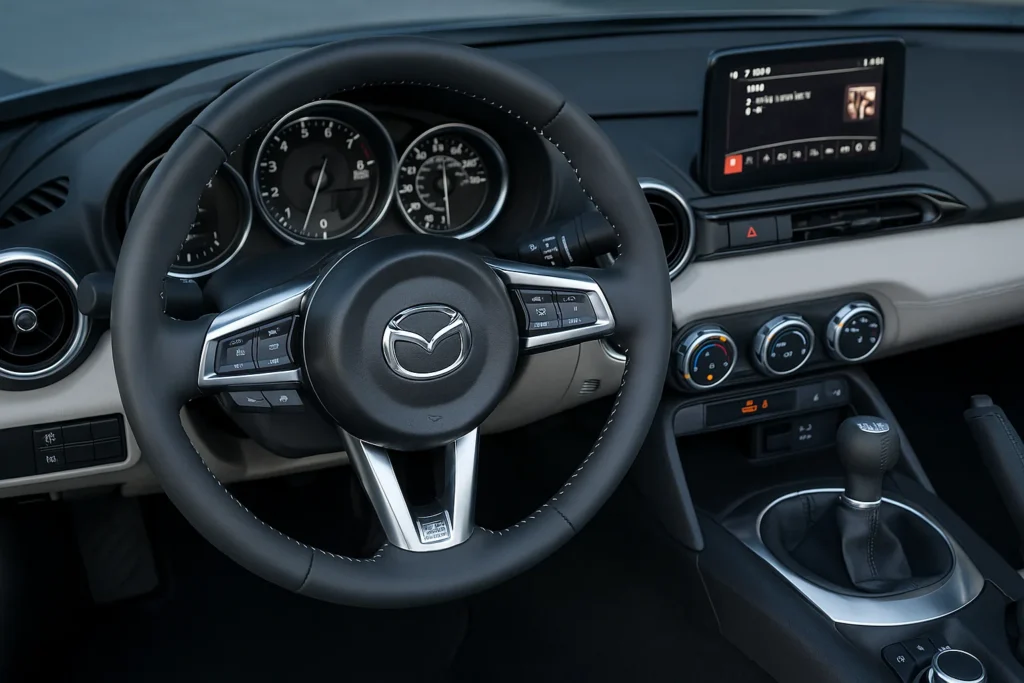
Safety
While it’s not trying to rival luxury sport sedans in the driver-assistance features department, the 2020 model still brings the essentials. You get standard blind-spot monitoring, rear cross-traffic alert, lane departure warning, and forward-collision warning, all of which give a little extra confidence when you’re enjoying the drive with the folding hardtop down. There’s no adaptive cruise control or lane-keeping assist—those are not offered—but automated emergency braking is included, which helps make the price feel a bit more justified. Safety-wise, it earned solid marks from the IIHS (Insurance Institute for Highway Safety) and held its own in crashworthiness tests by the NHTSA (National Highway Traffic Safety Administration). Tech like Apple CarPlay, Android Auto, and Bluetooth work seamlessly in the interior, and while the overall safety equipment list may not be as stacked as a GT trim or what you’d find in a Hyundai Veloster N, it hits the basics. Oh, and yes—it even comes with rain-sensing wipers and heated seats, because safety doesn’t have to be boring.
Warranty and Maintenance Plan
When it comes to warranty coverage, Mazda keeps things pretty average for the segment. The limited warranty lasts 3 years or 36,000 miles, while the powertrain warranty stretches to 5 years or 60,000 miles, giving driver’s solid peace of mind—especially for a car built to be driven hard on weekends. There’s no complimentary scheduled maintenance, which is a bit of a letdown, but still expected at this price point. Compared to the Fiat 124 Spider (aka the Miata’s twin in disguise), which offers an additional year of longer limited warranty, Mazda holds steady with better roadside assistance support over that period. It’s not groundbreaking coverage, but it’s enough to keep most drivers feeling secure while carving backroads or sitting in traffic.
Final Verdict
If you’re after a sports car that’s the perfect balance of fun and performance, the Miata RF Club might just be the answer. It’s not about being the Ford Mustang Shelby GT500 or a track-day monster, but more about being one with the road, especially when you drop the slick power top and let the limitless sky in. The leather seats are comfortable, and the heated comfy sport seats add to the joy on a glorious day with the sun shining down. Whether you’re tearing up the backroads or cruising through the mountains, the handling is sharp, and the quick acceleration is definitely noticeable. The console knob-controlled info screen might take a minute to get used to, but once you’re in the groove, it’s a seamless experience. Plus, with the Soul Red Metallic color, it’s hard not to feel like a winner every time you hit the open road. Sure, it’s expensive, but when you’re shifting through that superb 6-speed manual and feel the road beneath, it’s clear that it’s worth every penny. Plus, who can resist that snazzy body-color door tops and the smirk you’ll have on your face as you drive past others? There’s just something about this little Miata that brings out the best in every drive.
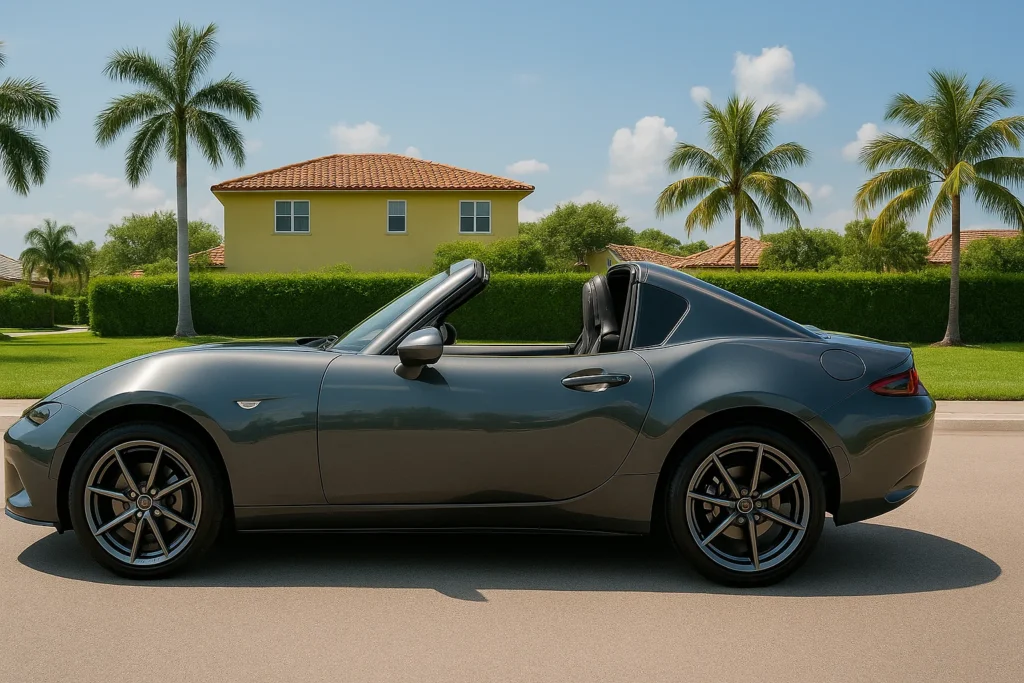
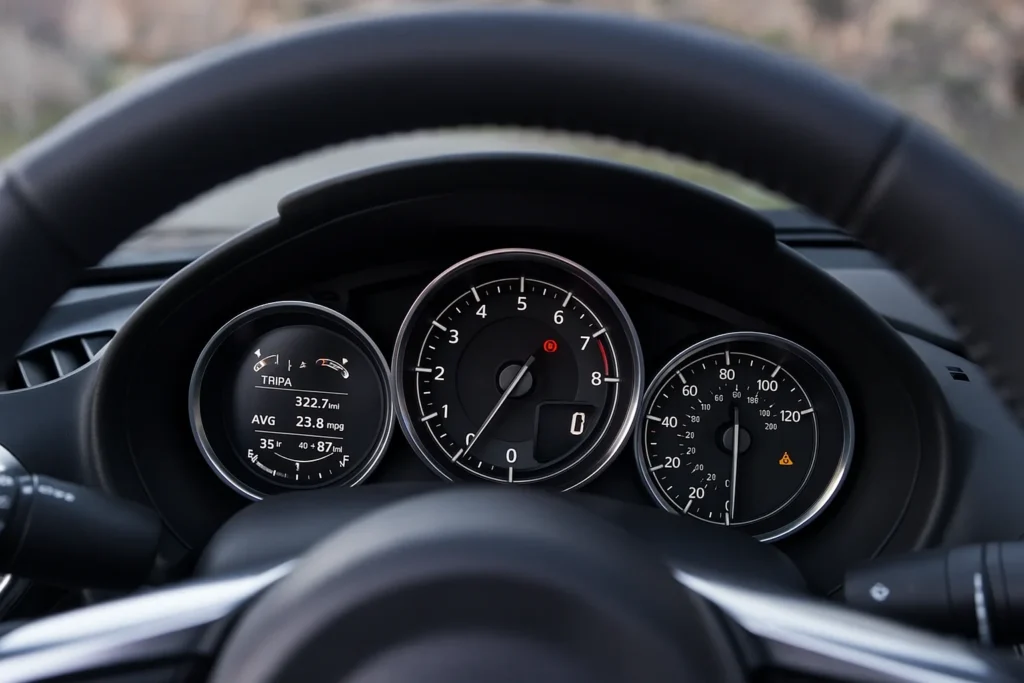
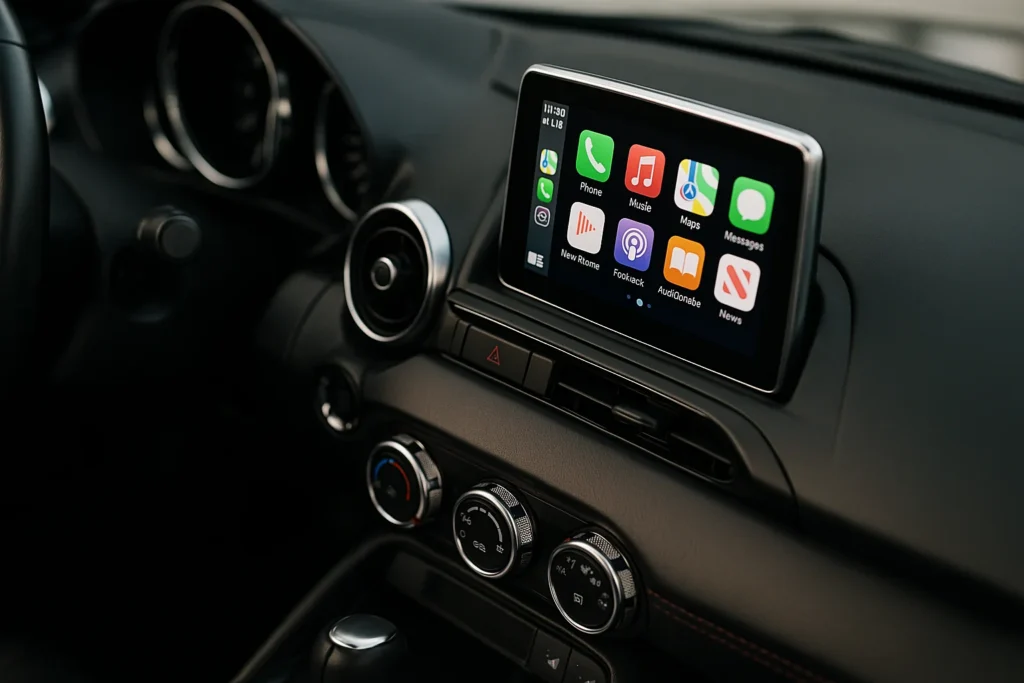



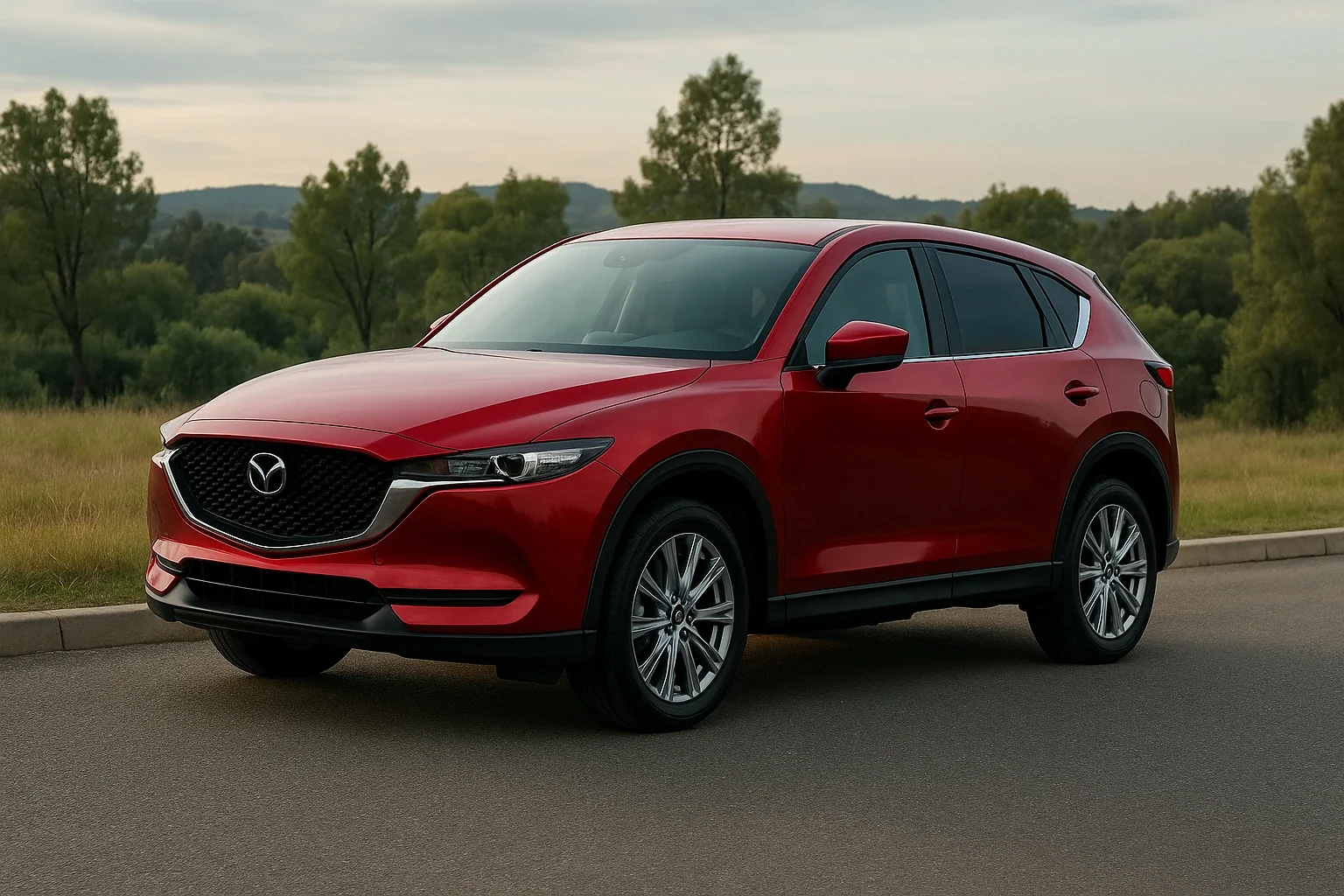
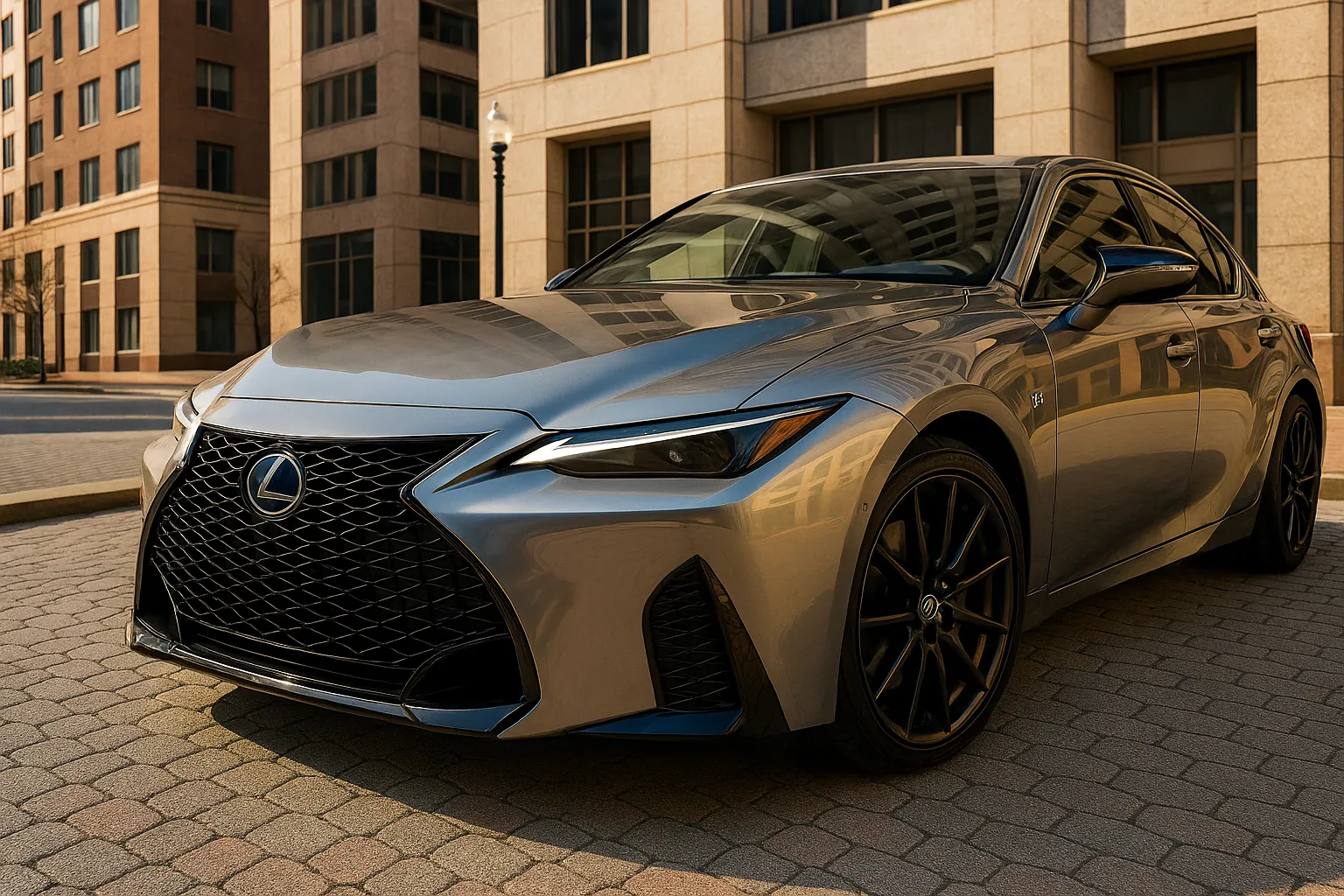
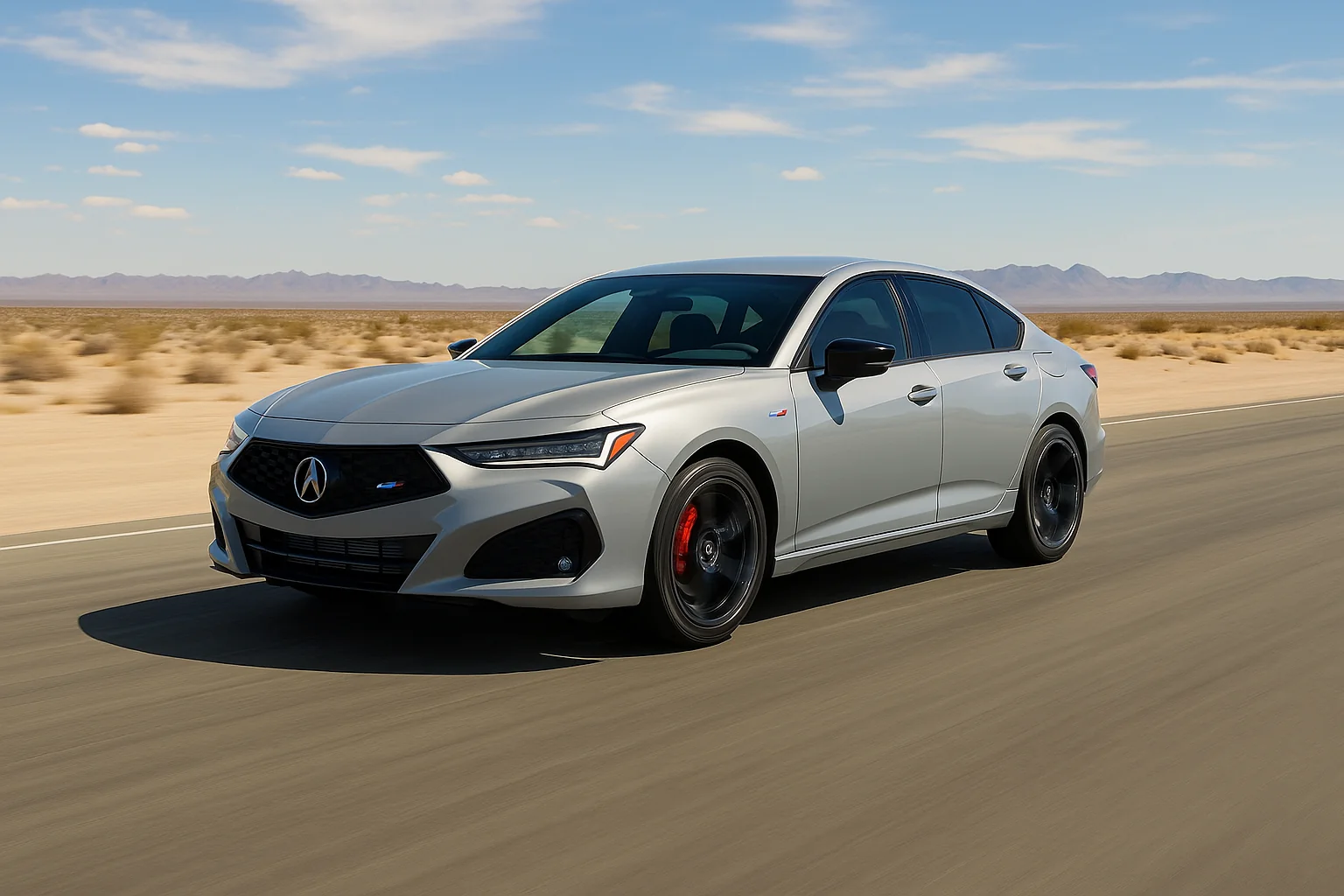
This Post Has 4 Comments
Pingback: 2022 Mazda Miata RF Review: Pure Driving Fun Returns
Pingback: Review: 2021 Mazda CX-30 Thrilling Yet Flawed
Pingback: 2025 Mazda CX-70 Review: Turbo Power vs Hybrid Tech Verdict
Pingback: 2024 Mazda3 Hatchback Review: Turbo Power & Luxury